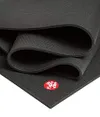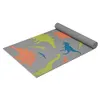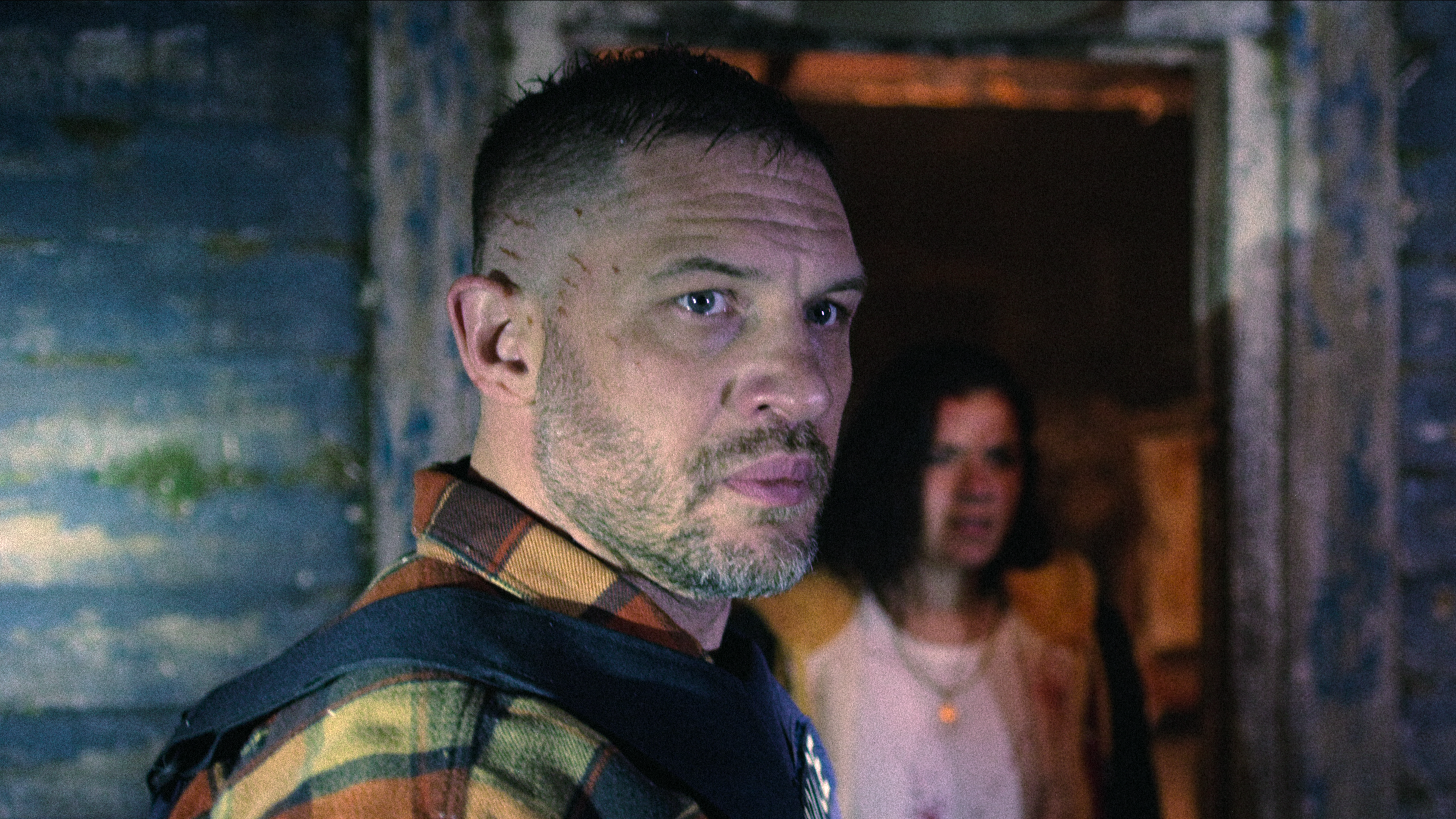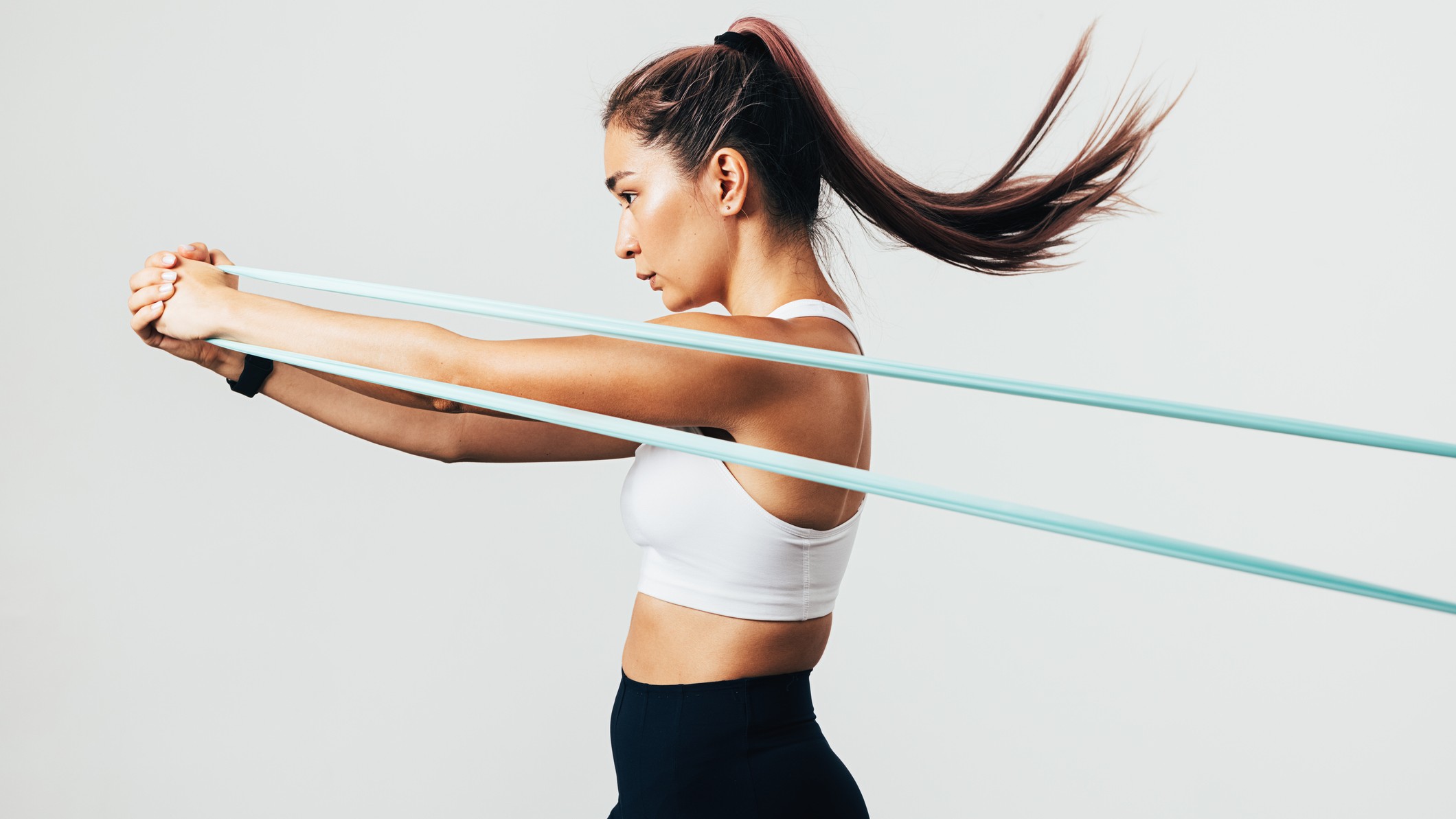
The three resistance band exercises you’re about to see focus on upper-back mobility. However, trust me when I say this: you can strengthen, mobilize and stabilize your entire body using just one resistance band and these three moves.
I’ve got a bit of a fitness crush on the Instagram page Band Workout Pros — resistance band exercise enthusiasts. The team behind the page posts daily with resistance band training tips to improve mobility, strength and workout form and publishes content from fitness experts, including athletes and trainers.
Some moves I’ve never seen before, despite exercising with the best resistance bands often and programming with them.
I’d choose a thin to medium-thickness band for this short routine. You can always go thicker to increase the intensity and overall resistance, if you prefer. You’ll also need an anchor point above your head to wrap your band around. Ready? Let’s get started.
Watch the video for the 3-move upper-back mobility routine:
The team features The Climb Clinic’s routine and says this is a “dynamic series of mobility drills to improve upper-back, neck and shoulder movement while challenging your lower body in an active squat.”
The short routine is formed of three exercises:
- Overhead prisoner squat
- Isometric squat with side bends
- Isometric squat with back extensions
A post shared by Resistance Band Training | Pro Trainers | Daily Posts (@band.workout.pros)
A photo posted by on
Don’t worry too much about the names of these exercises; the prisoner squat simply means you’ll place both hands lightly behind your head, and isometric exercises are static, like holding the squat position without moving.
Sign up to get the BEST of Tom's Guide direct to your inbox.
Get instant access to breaking news, the hottest reviews, great deals and helpful tips.
Upper-body mobility often gets blamed on tight shoulders, but, for many people, the limitations are misdiagnosed and could be thoracic, hip, ankle, or knee-related. These three exercises target lower-body joints using the squat and squat hold positions, moving you through a range of motion and then a non-moving contraction at the bottom of the squat to build strength and stability in the joints and muscles.
The overhead prisoner arm position targets the thoracic spine and upper body, including the chest and shoulders. It will also test your ability to stay upright. You'll immediately know if you have a mobility limitation if your heels lift, your upper body falls forward, or your elbows travel forward.
Overall, this routine could complement your exercise regimen, helping to “build strength within your mobility for better overhead movement, improved posture and smooth squats,” the team says.
I strongly advise watching the video on how to perform each move, and I’ve provided some tips myself.

Overhead prisoner squat
Using a pull-up bar, squat rack, or similar, secure your band overhead, then step into it, facing the anchor point. Position the band around your upper back, aiming for the band to rest along the bra line or shoulder blades. Step back from the anchor point until you feel tension in the band almost pulling you forward. This is your starting position.
- Place your hands behind your head, pull your elbows back and open your chest while drawing your shoulder blades together
- Stand tall and engage your core
- Place your feet roughly shoulder-width apart, toes forward
- Sit into a squat, keeping your back straight and chest proud. Aim for your thighs to be at least parallel to the floor in the squat position
- Pause, then drive upward to stand.
Keep your weight distributed through your feet and resist the urge to lean forward or draw your elbows together. Think tall and open.
Isometric squat with side bends
- From the bottom of the squat, keep your thighs parallel to the floor, chest lifted and hold the position
- Bend to the right and tap your right elbow to the outside of the right thigh until you feel a slight crunch through the right side body and a stretch through the left side. Avoid leaning forward or backward
- Pause, return to the center and repeat the same on your left side.
Isometric squat with back extensions
Last but not least, return to the bottom of the squat (as above) and follow these steps:
- Gently hinge forward at the hips and lean your chest toward your thighs
- Keep your shoulder blades pinned together, chest open and elbows pulled back
- Your heels should stay planted. When the heels begin lifting, you know you’ve reached too far forward
- Pause, then return to the starting position.
I couldn’t find any sets or reps, so I recommend aiming for roughly 8-12 reps per side and 2 sets, especially if you’re using the routine as a warm-up mobility routine.
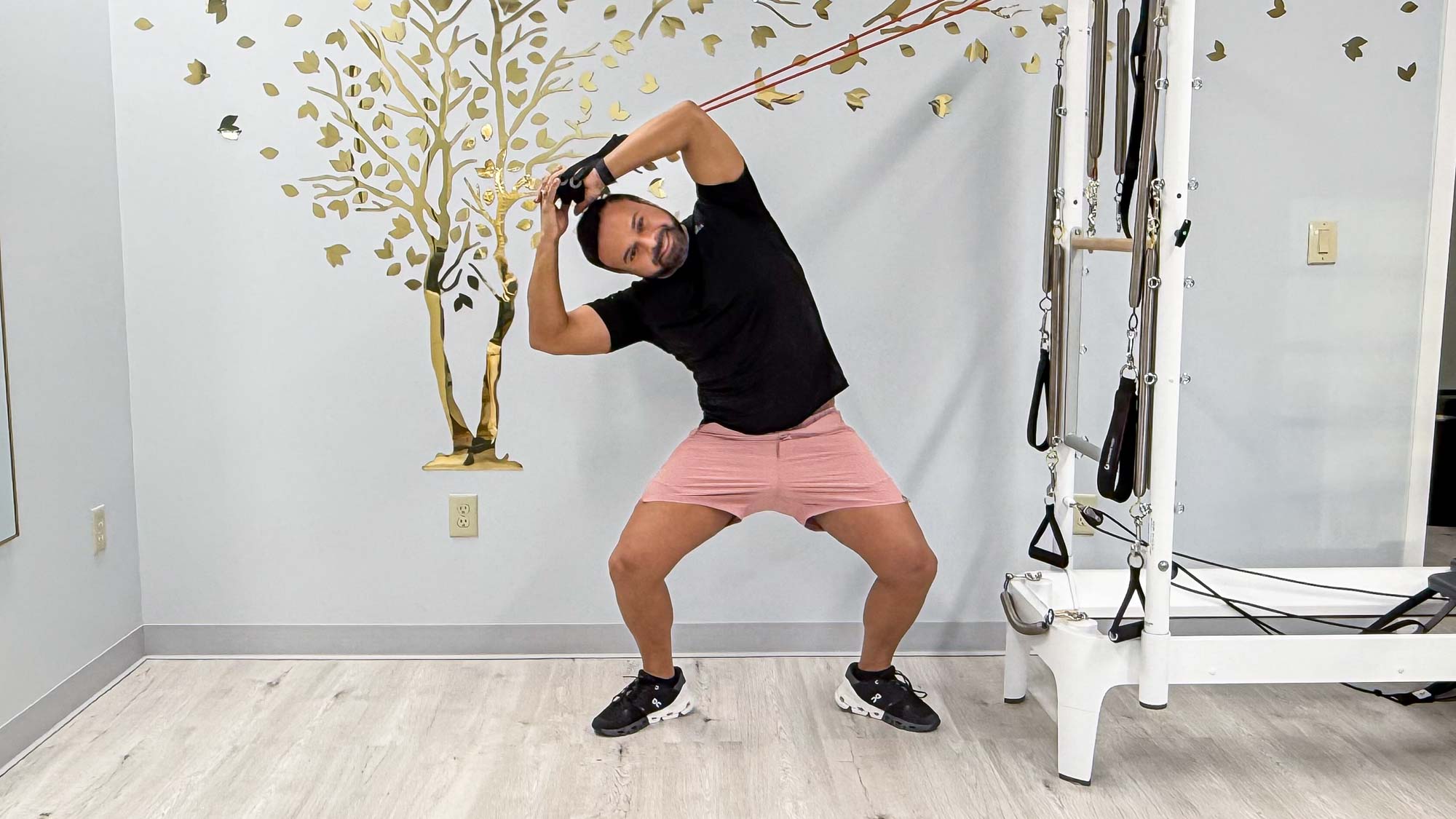
More from Tom's Guide
- I tried Chris Hemsworth's 15-minute full-body resistance band workout — here's what happened
- Do resistance bands really work?
- 6 resistance band exercises to build your arms without weights

Sam Hopes is a level 3 qualified trainer, a level 2 Reiki practitioner and fitness editor at Tom's Guide. She is also currently undertaking her Yoga For Athletes training course.
Sam has written for various fitness brands and websites over the years and has experience across brands at Future, such as Live Science, Fit&Well, Coach, and T3.
Having coached at fitness studios like F45 and Virgin Active and personal trained, Sam now primarily teaches outdoor bootcamps, bodyweight, calisthenics and kettlebells.
She also coaches mobility and flexibility classes several times a week and believes that true strength comes from a holistic approach to training your body.
Sam has completed two mixed doubles Hyrox competitions in London and the Netherlands and finished her first doubles attempt in 1:11.
You must confirm your public display name before commenting
Please logout and then login again, you will then be prompted to enter your display name.





